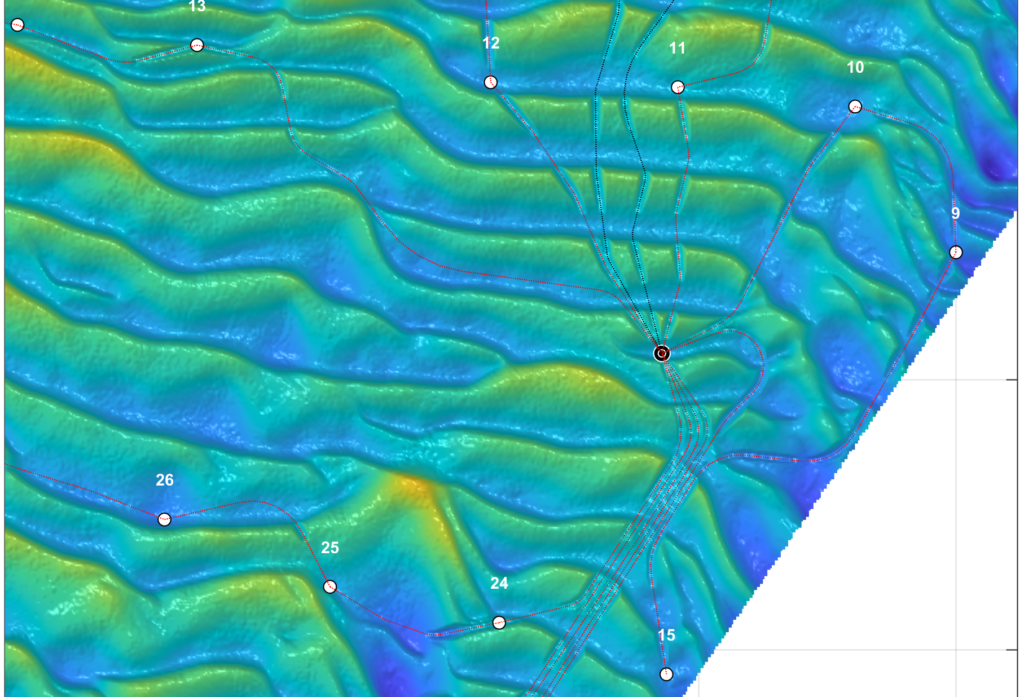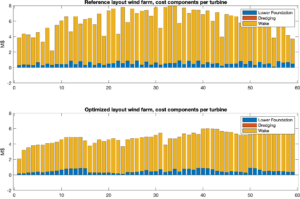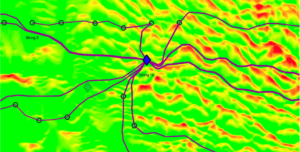In this project, we tackled a different problem: optimisation of the inter array and export cable routes. Normally, this is a relatively easy task, as it simply involves minimising the cable length. However, there were large sand waves at the site. Crossing them would either involve large dredging volumes (in case of deep burial) or large maintenance cost to rebury (in case of shallow burial). The unoptimised “shortest line” cable route initially planned therefore required excessive dredging costs. This needed to be improved. The client organised a request for proposal and Sideshore Technology secured the job.
Our approach was to set-up cost models for the main cost drivers and to use these to optimise the cable route. The cost drivers included cable procurement and installation cost, cable loss – based on the cable types and wind distribution, dredging costs of sand waves, and cable reburial costs – based on maintenance simulations. In addition, we also needed to adhere to many cable installation constraints, i.e. J-tube orientations, curve radii, and required straight sections.
Using this approach, we were able to reduce cost and calculate the optimal route of the cables by considering all these factors simultaneously. The result was a smooth route with an optimal balance between reducing the length and avoiding dredging and reburial costs. Various sensitivities were investigated such as the uncertainty in sand wave migration speed, cable costs, and burial strategies.


